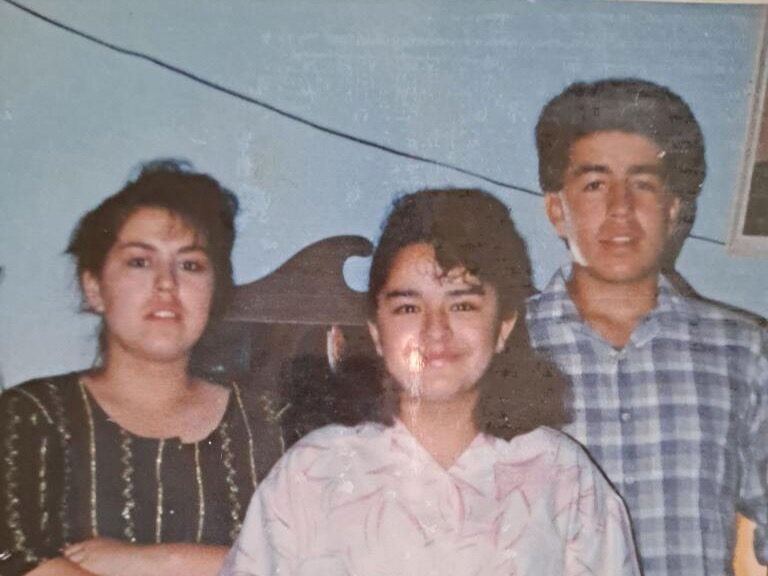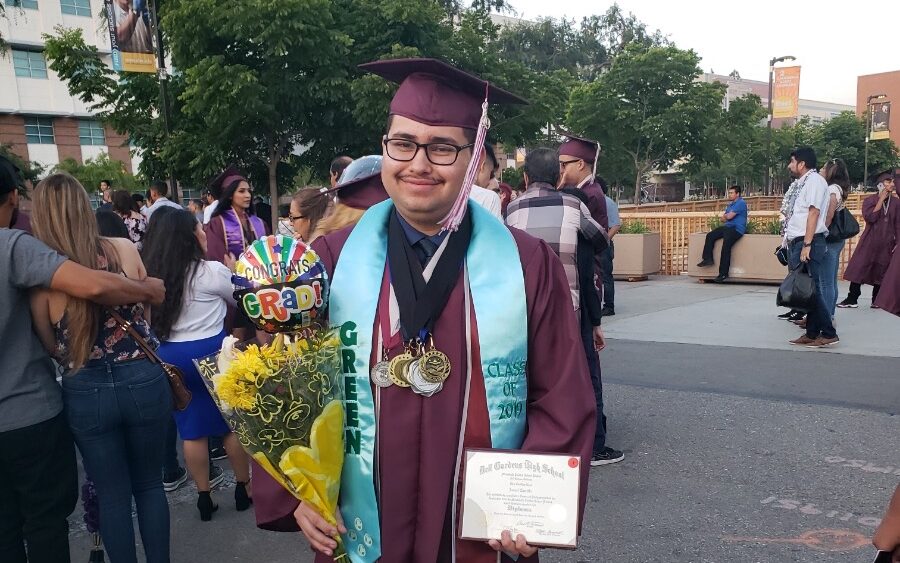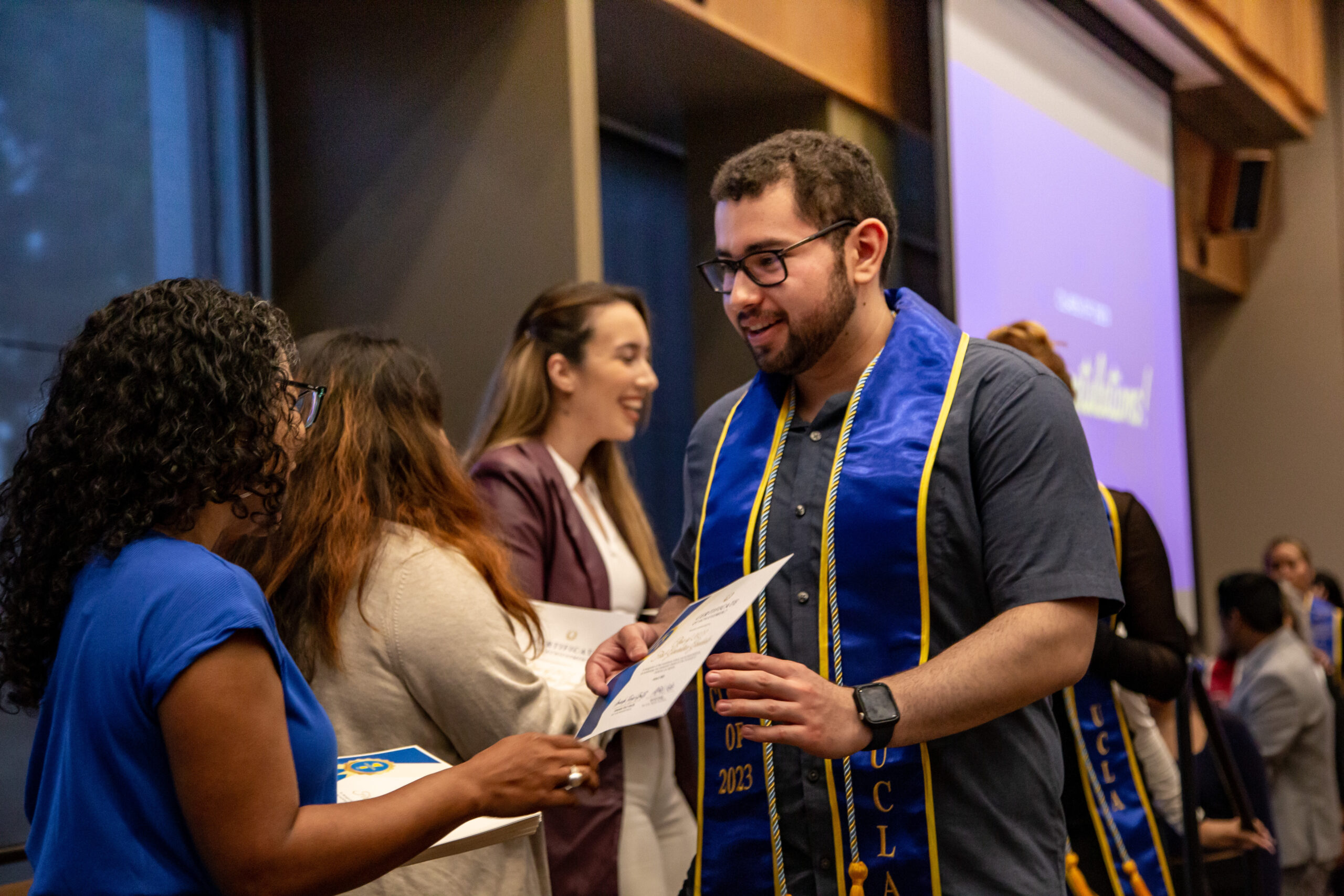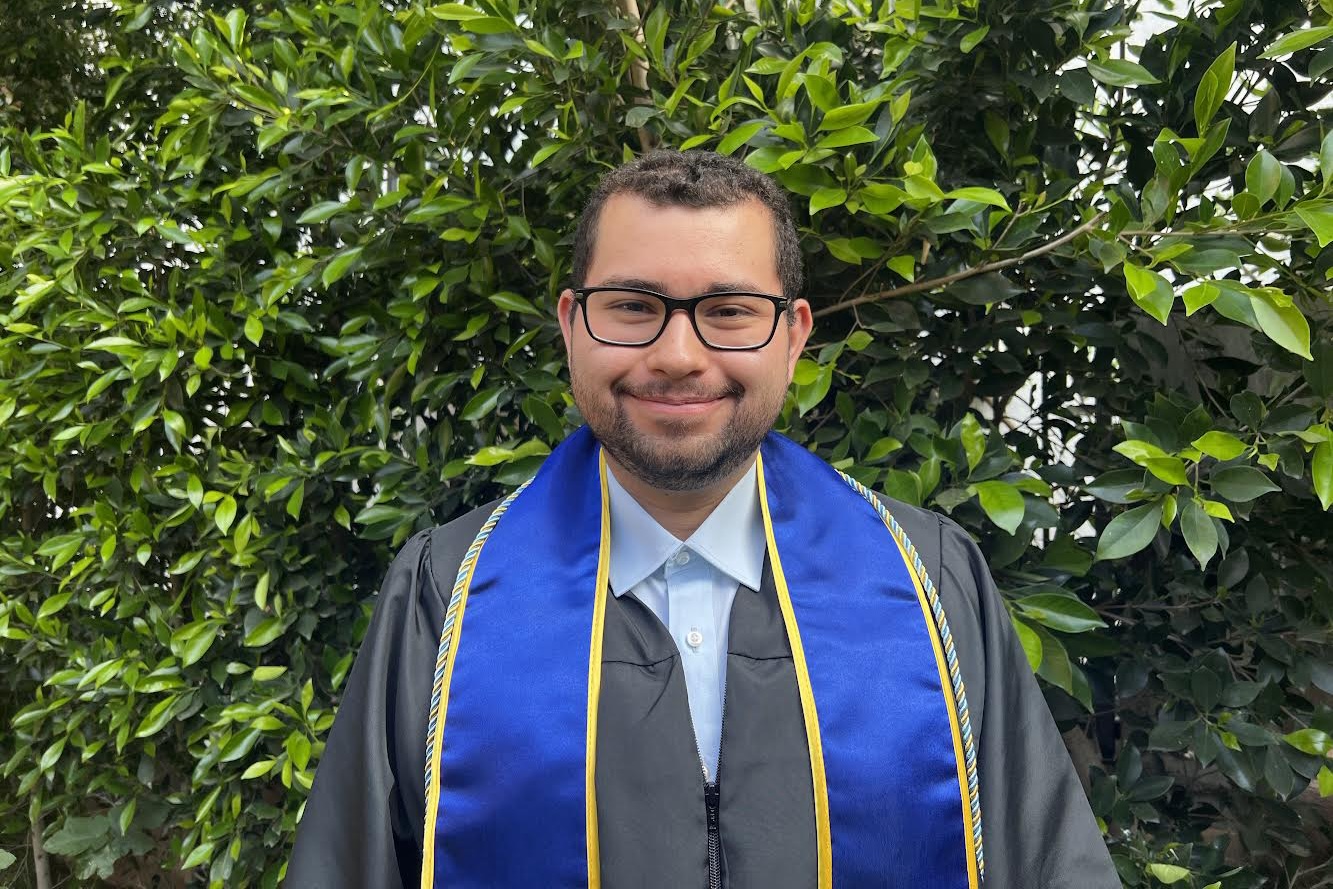THIS ARTICLE IS ALSO AVAILABLE IN SPANISH
TRAPPIST-1 is a planetary system that includes at least seven planets orbiting a dwarf star 40 light-years from Earth. This system has been studied by scientists all over the world – including me, an undergraduate first-generation college student from Bell Gardens, Los Angeles who this week graduates with a degree in Physics.
But before I share more about the exciting research I am a part of at UCLA, I’d like to take a moment to look back on where I came from. When my father was ten years old, he immigrated to Los Angeles from Tijuana, Mexico. Here, he met my mom, who also came here as a child from Mexico with her family. They settled in southeast LA surrounded by the vast Hispanic population in the area. Although I lived in one of the most diverse cities on the planet, almost everyone I knew was Hispanic, creating a very homogenous environment for a kid to develop in.
I was first exposed to science as a child through my love of dinosaurs. This evolved into watching science and engineering shows on TV. I loved that science provides us the ability to understand what happens in our world, even when things seem strange or counterintuitive. By the time I joined Bell Gardens High School in southeast LA, I understood that my grades and hard work would provide me with a path to pursue what I really loved. I also understood that my parents had worked hard to give me an opportunity to go to college – something they never had the chance to do.
What I love about physics is that it is the “language of the universe.”
Los Angeles may be a diverse city, but in reality the different communities can be very isolated, especially immigrant communities like the one I grew up in. When I came to UCLA I was suddenly exposed to all kinds of people from all over the world. Moving just a few miles away from where I grew up turned out to be a real culture shock.
Nonetheless, I was determined to pursue my love of physics and space science. What I love about physics is that it is the “language of the universe.” I love that it has been used to describe what we observe in detail and make predictions about phenomena that we have yet to observe. That eventually led me to take a class on the formation of the solar system with Professor Hilke Schlichting.




Learning how our solar system’s planets formed made me realize that that same knowledge could be applied to the countless exoplanets out there in the universe. As Professor Schlichting says, by placing the formation of our solar system in context of the universe, we might ultimately answer the question of where we come from and why life evolved where it did. Once I had this realization, I knew I had to learn more.
Being a young undergrad with no previous experience, I asked Professor Schlichting about how I could get involved in research. To my surprise, and delight, she took me on to pursue work with her group, the UCLA Planet Formation Group. Sometimes, to get involved in research you never thought you’d have a chance to touch, all you have to do is ask.
And just like that, I was a researcher of the TRAPPIST-1 system.
In my first project, I used a scientific model developed by Professor Schlichting and Professor Edward Young to analyze radius and mass data from the planets in the TRAPPIST-1 system. The model explains how these planets are formed by considering chemical reactions. One key aspect is the role of hydrogen in the planet’s core. During the formation of planets from a disk of material, hydrogen and other gasses come together. These gasses become part of the planet’s structure through chemical reactions described in the model.
By placing the formation of our solar system in context of the universe, we might ultimately answer the question of where we come from and why life evolved where it did.
To match the data of the TRAPPIST-1 planets, I had to adjust the initial conditions of the model. I did this by changing the amount of gas or atmosphere in the model. By doing that I could increase or decrease the size and mass of the planets until they matched.
I also made modifications to the equations that determine the structure of the planets’ mantles to improve the accuracy of the model. Eventually, I was able to reasonably match the masses and sizes of the planets. I also tried to create a more realistic model of the planets’ mantles by implementing a two-layered structure, but I faced challenges in making it work effectively.
I then moved to a project under a postdoc in the Planetary Formation Group, James Rogers. I have been working under his guidance to help make a planetary population detection model using the methods set out by a paper titled “Architectures of Exoplanetary Systems. I: A Clustered Forward Model for Exoplanetary Systems around Kepler’s FGK Stars”. The goal is to implement a model that reproduces trends in the Kepler data. We also use the two planetary formation models used in the Planetary Formation Group that explain atmosphere formation in exoplanets, photoevaporation and core powered mass loss. I am still working on this project now and we’re making great progress.

At UCLA, I learned the importance of being brave enough to pursue opportunities that may seem daunting. Because my progress was slowed by the pandemic, I learned this late in my time in college. I encourage new students to get into programs, activities, or research as soon as possible. Yes, that’s important to advancing your future career prospects. But if you’re interested in science for the same reasons I am, it’s about much more than that. The more things you’re exposed to early on, the easier it will be for you to find your true passion and apply the scientific method to the things you truly love.
Working in research has taught me how to manage my expectations of progress while working on a task. In the beginning of my projects, I faced a lot of issues getting familiar with the concepts and theory behind the goals I was working towards. There were points where I was making quick progress but it eventually slowed down. You need to maintain a realistic perspective that there are ups and downs on the path towards your goal. Of course, this isn’t just true in research, but life in general.
Looking back on how I’ve grown over the last four years at UCLA reminds me, in a way, of the planets I’ve been studying these past few years. It takes a lot for any planet, let alone one like Earth, to form. You need the right materials, in the right combination, at the right distance from the right star, all coming together at the right moment. And yet despite that, it may surprise you to know that today scientists believe planets like ours could be more numerous than we ever imagined.
To all the current and future science students, I want to say this: your ability could be more than you ever imagined as well. Just because something seems unlikely from your current perspective, doesn’t mean it will always be the case. Keep working towards building yourself, and eventually you can build yourself into a whole world.
———————
Israel Carrillo graduates this week from UCLA with a degree in Physics. He plans to continue his research on planet formation and atmosphere as a graduate student in the future.
Tags: commencement, Students
 Israel Carrillo is a native of Los Angeles and first-generation college student graduating this week with a degree in Physics (Photo courtesy of Israel Carrillo)
Israel Carrillo is a native of Los Angeles and first-generation college student graduating this week with a degree in Physics (Photo courtesy of Israel Carrillo)